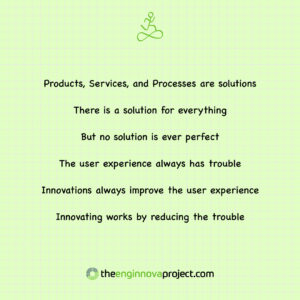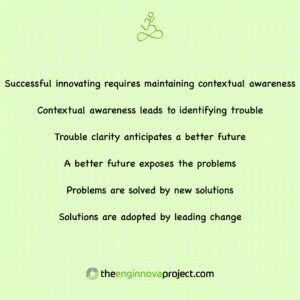




Everyone looks forward to, and wants more, innovation. This is true whether you are a user, a customer, or a supplier. An innovation is some combination of a new product, service, or process that brings an improvement to a person’s life. The test of whether something new is an innovation is whether it replaces an existing product, service, or process and becomes adopted as the new normal.
We know that creating something that becomes an innovation is hard. Start-up businesses, which are nearly always based upon the belief that they have something that will become an innovation, fail at what is estimated to be a greater than an 80% rate.
Innovating projects in established businesses don’t fare much better. Innovation practice research indicates that innovating projects fail to deliver on their goals 60% – 75% of the time. This causes business leadership to consider innovating to be a high risk activity, which biases their innovating activities to low impact projects that don’t improve the business much if they succeed, and don’t hurt the business much if they fail.
The statistics that focus on failure rate don’t tell the whole story. 20% of start-ups, and 25% – 40% of projects, succeed. This indicates that a significant portion of the time, Innovator’s do things right. Two key questions, which we at The Enginnova Project answered affirmatively, are, “What is it that they are doing right?”, and “Can what they are doing right be replicated?”.
Every Innovator, whether successful or not, has access to the same information. This information is distributed in an unstructured sea of “dots”. The distinguishing innovating success factor is that successful Innovators are better at identifying the critical dots and connecting them in different ways that non-successful Innovators.
The Enginnova Project 6×6 Innovating Stories are our methodology for identifying the critical dots. Each story stands on its own, but is only a single dot in the larger Innovation Story. Treating the stories as dots, and connecting them in a carousel to create a bigger story, is our way of communicating how to increase the innovating hit rate to yield more innovation faster.
